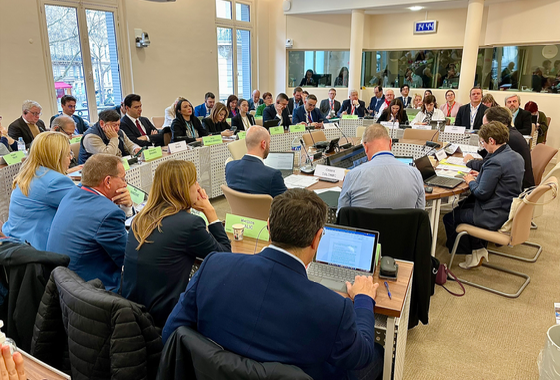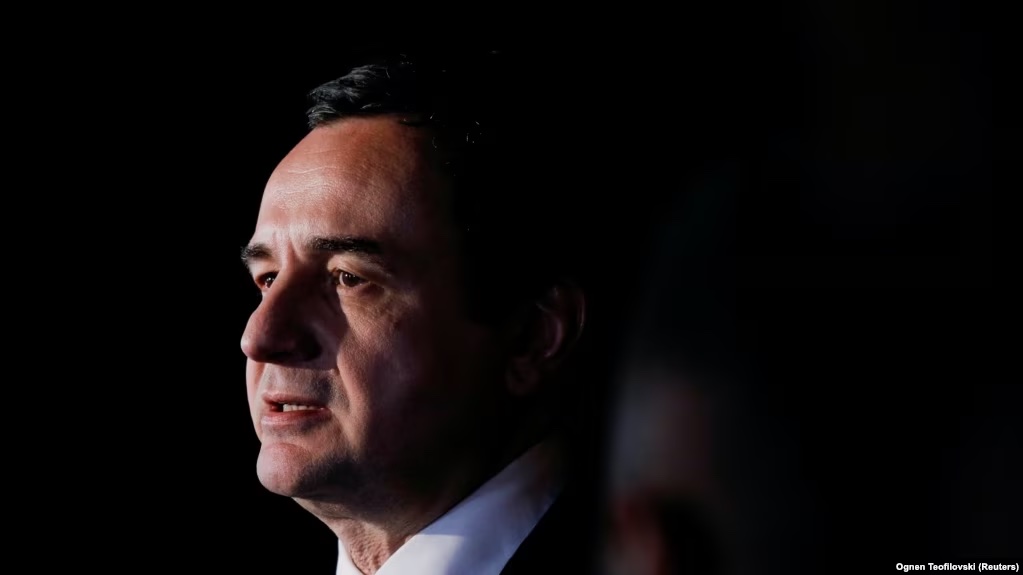Saturday, August 24th 2013

Living in the Kosovo capital, Prishtina, the most polluted city in Europe, I have been consistently upset about why we have to accept the risk of being sick from the bad air that we breathe, just to have electricity produced by the dirtiest fuel.
By Jeta Xharra BIRN Pristina
A good part of the world is starting to consider lignite/coal as fuel of the past. Using such dirty coal in Kosovo would be understandable and justifiable if other efforts to cut down on its use were being made, such as building energy-efficient homes and buildings, retro-fitting current buildings with the newest technology, using renewables as an energy source as well as, small country that we are, being properly integrated in to regional and European energy grids.
Considering that none of these options is being pursued, my perspective of the matter has been all doom and gloom, much like the rays of dust from the two lignite power plants situated only 15km from where I live in the centre of Pristina, which greet me every morning.
In the last weeks, however, I have seen three little sparks that have filled me with hope that the debate about the benefits of clean energy is moving towards a tipping point in Kosovo and the Balkans in general.
First, the monthly WindPower is reporting that Kosovo is set to become a wind energy producer in the near future, as a 45MW wind project in the village of Zatric enters into construction phase with Siemens turbines next year.
In a Kosovo obsessed with coal, where its leaders for the last decade have been in a blind race to build the third lignite power plant – despite all indicators showing there is not enough water to keep the plant going, that it would be environmentally catastrophic, socially unjust to the area where it will be built and economically unsustainable – this is proof that renewable energy is not as much of a luxury for poor Kosovo as we have been told.
The second news filling me with optimism was participating as an observer for two days at the end of July in an unusual race between former enemies of the Albanians: Serbs, Macedonians and Montenegrins.
This was the Green Ideas Competition, where regional teams argued before an international jury, not about who has most rights to a territory, or who suffered most in the war, but over whose green idea is the most innovative, to win the 10,000 US-dollar grant.
I was excited by the innovative ideas I saw coming from the Kosovar teams: Arta Ponosheci who presented gift products made from recycled material; Arlind Gjikolli who invented a paper-saving method that replaces business cards; Anila Mirdita, from the BioNatural shop for local bioproducts, who is growing safran, one gram of which she sells for 9 euros on the world market.
If one gram costs what 20 litres of gasoline cost, this has the potential to make Kosovo the Middle East of Europe.
Why cannot this simple maths be understood by those who have embarked on a vision of burning coal and who support the further destruction of fields where saffron and so many other agricultural products can grow? What is the interest in the irreversible destruction of land and its biodiversity, contamination of water and air and building a monstrous power plant that breathes down the necks of Kosovars for next 40 to 60 years?
Ultimately, I was inspired by the winners of the competition: Pezana Rexha, the Tirana-born architect, aged 28, who can furnish your entire house for 2,000 euros max with furniture (bed, table, sofas, lights etc.) made only from recycled material; Josip Grabarovic, from Novi Sad, who can make ice cream and popcorn from a mobile shop run on solar power; and Anica Simovic, from Vranje, a mother of three who dries fruit from her trees in a solar-powered, fruit-drying machine that she has invented.
The new green Balkan entrepreneurs are taking renewables seriously. Most of them have already run green businesses for several years, not because of this competition but because this clearly presents an economically viable business option. Thus, the three who won the grant will be using it to further strengthen their businesses rather than starting from scratch.
Last but not least, I am cautious, but hopeful about President Barack Obama’s Climate Action Plan, launched at the end of June, which calls for an end to the public financing of new coal plants overseas.
Last week, the coalition of 10 Kosovar civil society organizations (of which BIRN Kosovo is part) wrote to John Kerry, the US Secretary of State, asking the US to practice abroad what it is applying at home: to stop building a new US and World Bank-backed lignite power plant in Kosovo and invest in long-term sustainable renewable energy capacities. This is the European Kosovo that we want.
As Reuters reported the KOSID letter reads: “Lignite is the world’s dirtiest form of coal, and moving forward on this project would negate the promise of the Climate Action Plan. Millions of US taxpayers’ dollars have been spent on this project, which will not incorporate the best available technology to limit pollution and protect public health.
“At the same time the project will significantly raise rates for average citizens, meaning we will pay both in our electricity bills and with our health. The UC Berkeley study shows that Kosovo has viable alternatives to coal and we ask that you use your leadership on climate change to stop this project and instead seek alternatives that support Kosovo’s energy efficiency and renewable energy sources.”
The backstage conversations taking place in Kosovo right now tell us that some investors who were going to build this power plant are backing off, because possibly the bar has been raised too high to make the plant with “the best available technology”, which makes it too expensive and economically unprofitable to build.
Other investors, on the other hand, are trying to bargain, bully and bring these standards down, claiming, roughly, that Kosovo is just not sophisticated enough to get five-star power plants.
Which option will win is a matter of a close battle that has been going on for at least the last three years. In this fight, clearly the best solution for the ordinary citizen is getting as many projects such as the Zatric wind farms as possible to add to current capacities and diversify and decentralize the energy sector.
.
This needs to be done in combination with an energy efficiency campaign that stops Kosovo wasting 40 per cent of its produced energy, which today is unaccounted for.
Wind farms like that are not just good for our health. The report from Professor Daniel Kammen of the University of California, Berkeley, has shown that low carbon investments could create some 30,000 new jobs for Kosovars, far more than the 500 jobs that a new coal power plant is expected to bring. It would also save some 1,700 lives that are directly and indirectly lost from pollution and create a healthier environment for our children, their children, and generations to come.
Maybe international institutions like the World Bank, USAID and the EU, as well as the Kosovo government who all seem to be see the new coal power plant as the only viable option, should take a leaf out of the book of the young Balkan entrepreneurs and change their entire vision of the energy future of Kosovo and the region.
Maybe their economic, social and environmental vision of Kosovo, like mine, would then see through the gloomy cloud of lignite looming currently over our plain, into a cleaner and safer future. I always thought green is better than grey. balkaninsight




